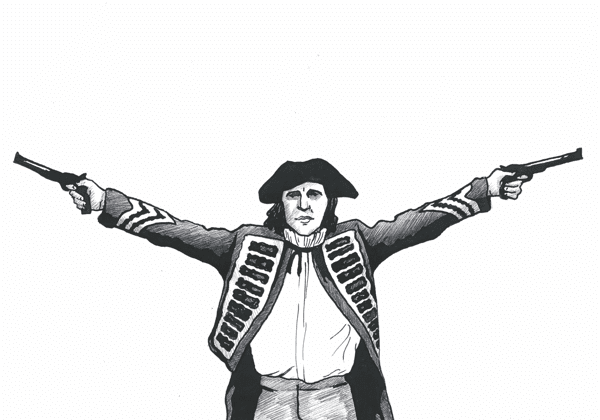Twitter recently came together to celebrate the 12th anniversary of the iconic CBBC series Horrible Histories. Found on ABC 3 in its heyday, Horrible Histories originally ran between 2009 and 2014, shaping a generation of young Australians’ views of the past. Structured as a variety show, each week featured a range of catchy songs and sketches that covered everything from Henry VIII’s wives to the Suffragettes. The writing was watertight, the jokes were funny, and its charming cast of comedians like Mathew Baynton (whose portrayal of Charles II was a viral fan favourite) and Martha Howe-Douglas were incredibly talented.
Based upon the series of 23 books by British author Terry Deary, Horrible Histories explored the details of history deemed too gory or disgusting for the classroom. Deary always viewed his texts as anti-establishment, worried that children would stop reading them if they were used as a tool in schools.
Ironically, for books touted as a rebellion against the system, Deary notes that the book topics were chosen on their marketability by Scholastic. The successful masquerade of Deary’s books as ‘edgy’ and ‘dangerous’ successfully caught the attention of rebellious children in libraries and scholastic catalogues worldwide.
Producer Caroline Norris was first asked to develop Horrible Histories into a television series for CBBC with Dominic Brigstocke in 2007. Over email Norris told me: “I’d spent 10 years in and out of children’s TV at the BBC and had moved onto adult programming, so I was reluctant to go back… However when I read Terry’s books, I knew I couldn’t let anyone else get their hands on them!”
Wanting to carry over Deary’s tone and humour to the screen, Norris and Brigstocke devised the sketch format, putting together a mood reel of “Some Python stuff, Do Not Adjust Your Set sketches and Blackadder”. The show’s writers’ room was an ensemble of Brigstocke and Norris’ favourite writers, blending the worlds of BBC’s prime time and children’s comedy. Writer/Producer Giles Pilbrow created the popular ‘Stupid Deaths’ segment, the iconic host Rattus Rattus, and guided the production on how to transform the book’s original art into animation.
Many of the show’s greatest successes came from portraying history through parody of other media. Segments made fun of prominent reality TV shows with ‘historical wife swap’ and aped the mopey lyrics of Morrisey in a song about Charles Dickens.
The show’s run was not without its fair share of controversies. The writers were accused of being anti-British after a skit pointed out that all England’s cultural cornerstones are stolen from former colonies. Another episode was pulled after it inaccurately represented Florence Nightingale as racist for comedic effect.
Yet, the original all-white troupe’s portrayal of historical figures of colour can make for an awkward, even objectionable watch. While historical moments like the civil rights movement were played by a diverse cast, events like the First World War are represented as exclusively caucasian affairs. A song that dealt with the British colonies of Australia happily described the conditions of convict quarters, while only giving Indigenous people a passing mention for their killing of labourers. As a series that promotes contrarianism and radicalism in the presentation of history to children, future iterations should embrace a non-eurocentric perspective and casting a more diverse range of voices.
Despite its flaws, Horrible Histories continues to be a global triumph in government-funded broadcasting, acting as a catalyst for a generation’s interest in history. The cast and crew of the original show, which ended in 2013, have continued to collaborate on a range of projects. “The troupe went off and starred together in the film Bill and the series Yonderland, and now Ghosts.” As for herself, Norris said “Martha has just been a guest in Motherland which I produced and several of the gang pop up in Tracey Ullman’s Show.” However, for fans who want more Rattus Rattus, they will just have to tune back into the original Horrible Histories.

Art by Grace Pennock




